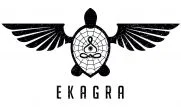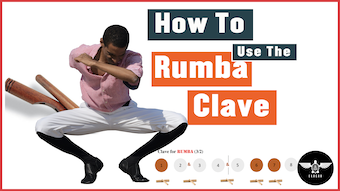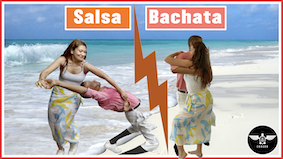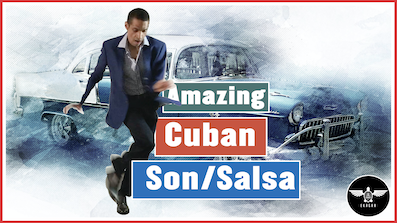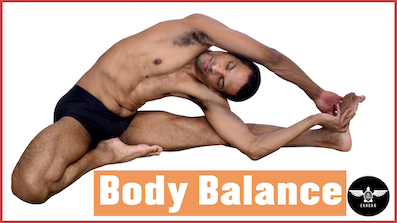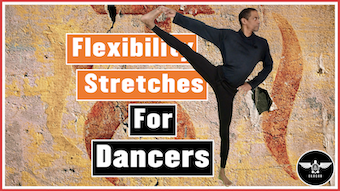
Rumba clave is one of the instruments you hear in typical Cuban rumba music, but also in salsa. If you struggle to find the beats or rhythm of salsa songs, chances are you cannot locate where the rumba clave is. The following is a step-by-step guide to rumba clave and how to train your ears to recognize that instrument.
What is a clave and how is it played?
A clave is a pair of wood sticks connected to each other to produce a sound. The instrument is particularly important in Afro-Cuban music, such as son, guaguanco, rumba, or salsa. It’s one of the first instruments you will hear in this kind of music. Indeed, the clave represents the spirit of the songs. It gives a perpetual soul to the music; therefore, even in songs that do not have the clave physically present, its essence remains present.
How is it played?
The clave is played in a loop of 5 strokes that form a basic step. The latter is made out of 2 measures of 4 beats each. Therefore, in one basic salsa step, for example, you will hear the clave five times out of 8 beats/count.
Rumba clave versus clave for son

Rumba clave
■ The pattern 2/3 means that on 8 counts/beats, you will hear the clave twice on the first measure, then three times on the second.
■ 3/2, on the other hand, has the clave two times on the first measure, once in between both measures, then two times on the second measure
Son clave
■ The pattern 2/3 has the clave twice on the 1st measure and three times on the 2nd one.
■ For the 3/2 rhythm, you will hear the instruments three times on the first measure and twice on the second.
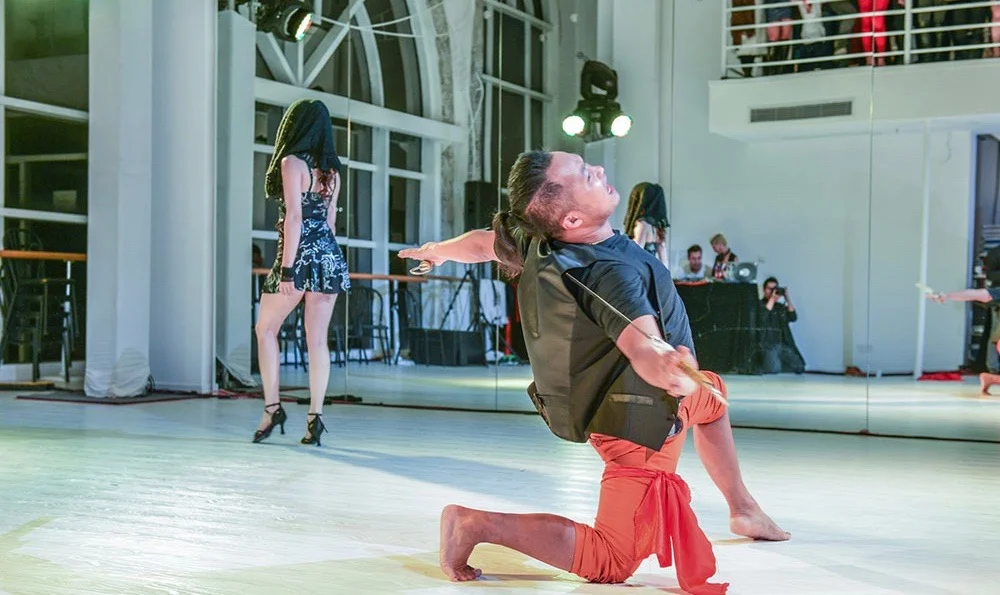
What is the clave rhythm and why is it important?
As I mentioned earlier, the clave is like the soul of the music. It represents one of the key liaisons between the song and the dancer. That’s why, whenever you try and learn salsa, for example, your teachers will try and teach you to recognize the clave patterns. And if you watch some rumba videos, you will see how the musician synchronizes his feet to the movement of the clave. In some Son moves, the dancers match every stroke of the clave.
Since the clave functions in some kind of looping motion, once you can identify the clave in a song, you will always dance to the right beat. Many dancers struggle to develop their skills because they cannot clearly detect the rumba clave and mainly move in a guessed world.
Why is it important
The importance of the rumba clave, in particular, lies in its setting the tone of the overall song. Like an introductory speaker at a movie premiere, it announces what is coming and sets the mood right, so the participants get into the proper motion and mindset.
Why you know how to hear the rumba clave?
I define musical hearing as the ability to recognize the patterns of a song, any song really, and in turn, translate that pattern into appropriate movements. Without this skill, you quickly get lost and cannot coordinate your movement properly.
Many students want to rush into dancing salsa and completely neglect that aspect of the dance system. To take an analogy, it’s like wanting to drive a car without understanding the road rules. You might get away a few times without accidents, but you will eventually crash the car.
So you need a tool, the rumba clave, and a system to develop your musical ears. The system should take you from baby steps to full independence. That’s why I have developed a 5-level musical hearing system that uses the rumba clave as its base.
First, focus on songs with distinct rumba clave
There are music styles that are heavy on the rumba clave. Such songs are Rumba and also salsa. Groups like Los Muñequitos De Matanzas are the perfect types of groups to listen to if you want to recognize the rumba clave.
Choose music rich in the rumba clave
Salsa steps rely on the rhythm and patterns of the track. Since a song is the continuation of 2 sets of measures of 4 beats each, it’s also the perpetuation of 8 beats.
The key instruments dancers must be able to recognize are the conga, clave, tumbao, etc., but since other instruments can drown these instruments, how can you effectively train your ears? That’s when rumba quicks in. Indeed, the best types of music that are heavy on clave are rumba.
Street rumba
Start with a song such as that portrayed in this video. That will tremendously help you identify clave during a salsa song.
How does the rumba clave translate into salsa steps
This simple step is ideal for coordinating your perception of the clave with your feet.

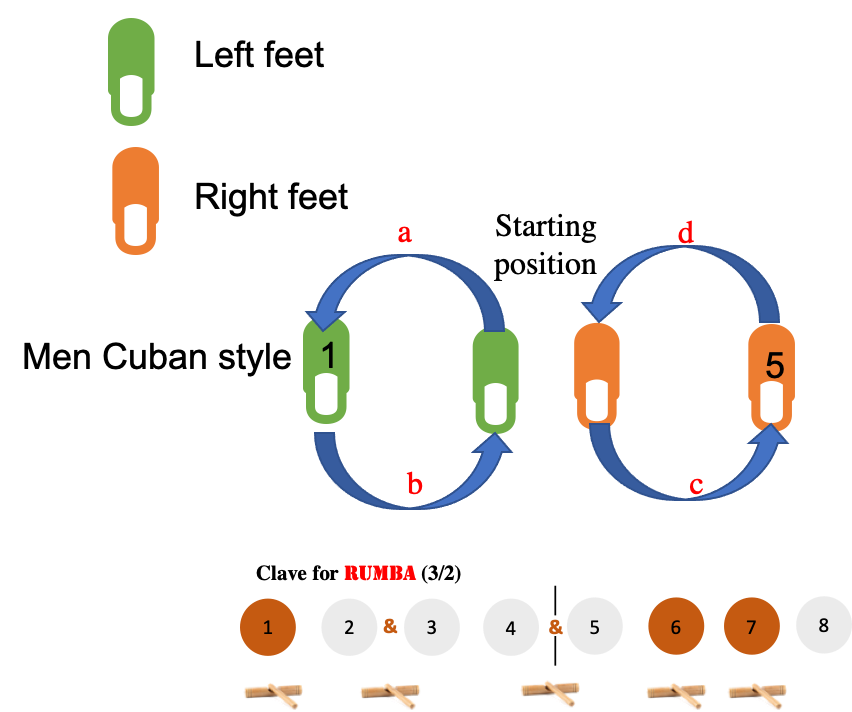
Train this step often, as it will help you tremendously. As simple as it looks, it requires balance, counterbalance, and the use of arms, legs, and core, with the core being the center of command.
Now that you have followed this advice, you can start seeing how you are developing your musical hearing. Most salsa teachers don’t know this simple trick. From that point onward, you must blend with the clave player. In this second video, the clave player is not distracted by the different instruments played around him. You should have the same attitude since the multitude of instruments create confusion for dancers.
Do this every day for 2-4 weeks, then move to the following kind of music.
For more on the other levels to develop your musical ears click HERE.
Transition to salsa songs
After a while your ability to identify the rumba clave in a song will improve. From there you can appreciate salsa songs more and understand that some of these songs are less complicated than they seemed at first.
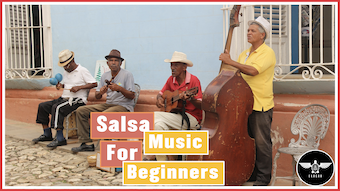
5 Basic salsa steps to do using the rumba clave rhythm
Step 1 – In position
This basic step is similar to the one we spoke about earlier. The only difference is that you dance it in the same position. The critical movement happens in the hips and shoulders. Although it’s relatively easy to learn, it requires you to recognize where the clave pattern is and how to move accordingly.
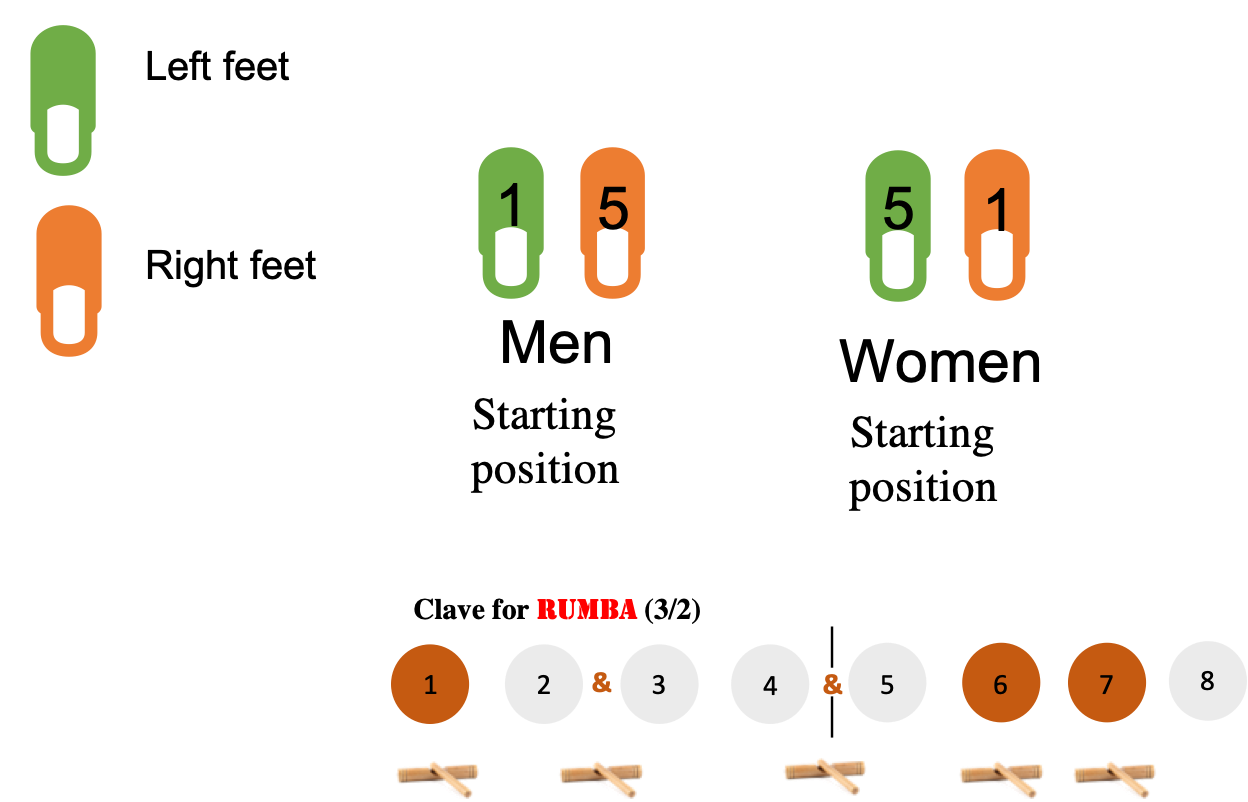
Step 2 – Cuban salsa step
This step borrows from Son dancing. It’s an amazing basic step that coordinates all the steps with the clave strokes. I use it to help you develop a sense of coordination between arms and legs. It’s a walking step on an 8-beat count.


The man moves forward as the lady moves backward. It’s a basic walk forward and backward motion while your arms move in sync.
Step 3 – Leg backward move
This step is an open arms step, where the lead leg goes behind the supporting leg. In this motion, both partners open their bodies. The man uses his right arm behind the shoulders or hips of the female, and the lady uses her left arm on the male equivalent’s body part.


Step 4 – Basic salsa step
It’s the simplest one of those shown so far and the most widely known. But now that we have the unfair advantage of understanding how our body should act, it’s easier to implement this step. You imagine a rubber on both sides (front and back) of your body trying to pull you to the center.
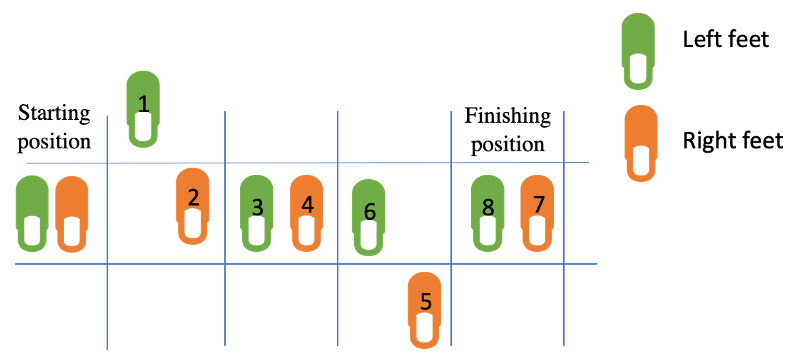

As you move forward, the rubber pulls you back, and as you move backward, the rubber pulls you back to the center.
Step 5 – Cuban salsa step

As the man’s left leg goes backward, the lady’s right does the exact opposite. The man’s left arm holds the lady’s right, forming a W shape between the two arms.
Using these locked arms, they pull each other back to the center (2,3)
And they push each other back with the man’s right and the lady’s left palms. So that their corresponding leg goes backward.
Use these 5 basic salsa steps to train your body and ear connection.
Key takeaway
The clave is a critical instrument in much Afro-Cuban music since it connects the dancers, musicians, and music. You can see that in rumba when the musicians change the rhythm of their music to match the dancers’ moves. To develop this skill, the dancer must understand where the clave is in the song and at what speed it is played. Indeed, there is not just one clave speed. Some pieces have faster clave beats, while others have slower ones. Therefore, if you want to understand the rhythm of clave, you must listen to rumba very often. Then, as you move to other forms of music, you will realize that you have developed a pretty astute earing level. Different styles of afro-Cuban dances will become easier for you to deal with.
Discover new, untapped materials
Learn Cuban Salsa, Bachata, Improv’ and many other dance styles. Check out these videos and see what you can achieve in less than 3 months. Private lessons available for just £35/Hour. Free body movement and basic salsa and bachata lessons provided.
